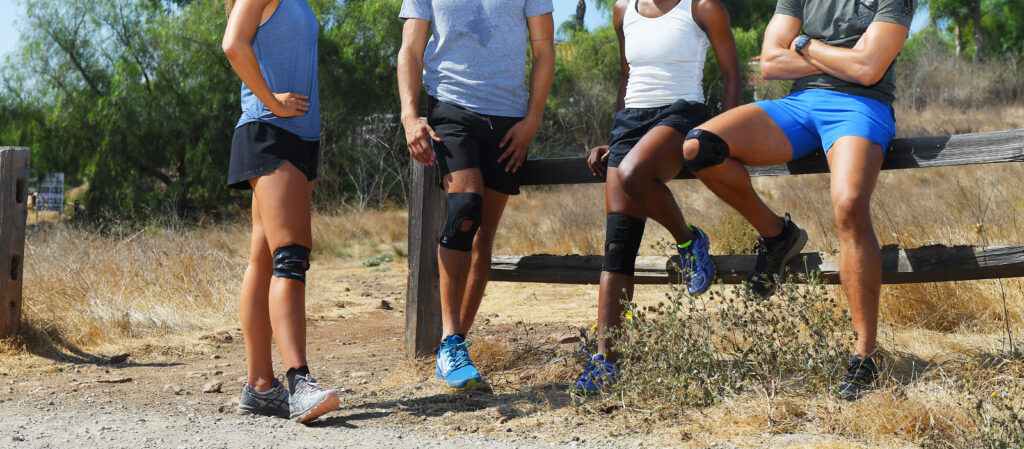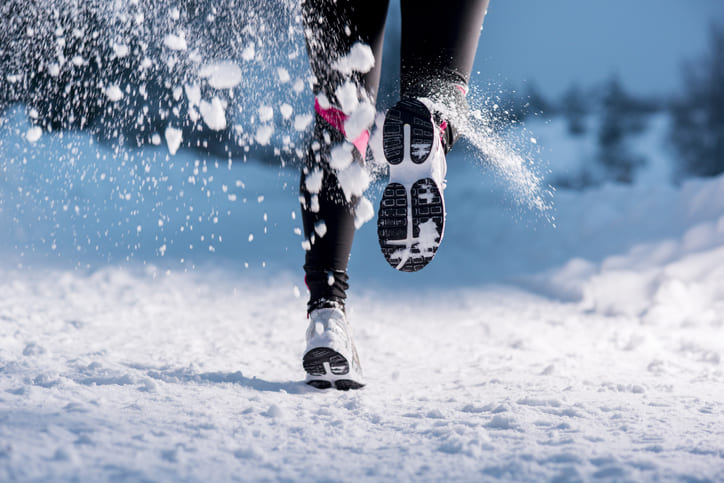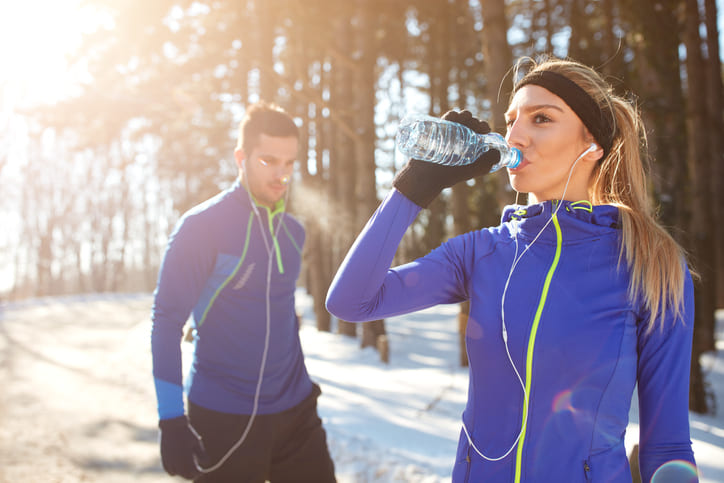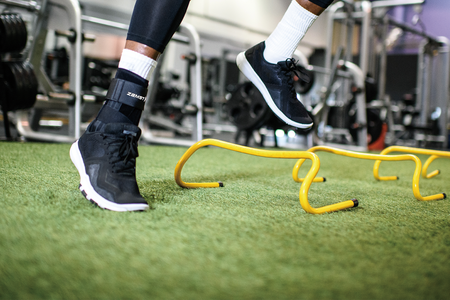While winter season brings out the big jackets and thermal wear people still want to continue exercising. Running is an important and cost-effective way to promote cardiovascular fitness. Only problem is most people love to run outdoors to get sun. In many parts of the country running outside during the winter can be very miserable.
However, with the right mindset and preparation, winter can be an invigorating time to lace up your running shoes and hit the pavement. In this blog, we’ll explore 10 essential tips to make your winter running experience not only bearable but enjoyable.
1. Dress in layers
One of the most crucial aspects of winter running is proper layering. Begin with a moisture-wicking base layer to keep sweat away from your skin. Add an insulating layer for warmth, and finish with a windproof and waterproof outer layer to shield against the elements. Don’t forget a hat and gloves to retain heat in areas where it’s easily lost. Are distal parts of our body such as our hands and feet have the poorest circulation so making sure those areas stay dry and warm is essential.
2. Choose the right footwear
Invest in running shoes that offer excellent traction on snow and ice. Look for options with a durable outsole and consider adding traction devices like ice cleats for added stability. By upgrading your running shoes to a winter-ready pair with insulation will keep your feet warm and the water-resistant features will help ward off slush and snow.
Make sure your shoes have enough room for thicker socks, which provide extra insulation. You want to keep your feet dry and warm in order to ensure if you are getting correct foot stability to reduce injuries.
3. Warm-up indoors
Cold muscles are more prone to injury, so warming up properly becomes even more critical in winter. When it’s cold outside it’s even harder to get blood flow going and stay warm. Spend a few extra minutes doing dynamic stretches indoors to get your blood flowing and increase your body temperature before heading out into the cold.
4. Stay hydrated
Despite the chilly temperatures, staying hydrated is just as important in winter as it is in summer. Cold air tends to be dry, and the body still loses moisture through breathing and sweat. Drink water before, during, and after your run to maintain optimal hydration levels. Replenishing the nutrients is a priority for faster recovery.
5. Be visible
During the Winter the days become shorter and it gets dark earlier than the summer. This can cause reduced visibility which can hinder safety and effectiveness of your run. Ensure you’re easily seen by wearing reflective clothing and accessories.
Consider using a headlamp or attaching small lights to your gear. Being visible not only enhances your safety but also makes you more confident in low-light conditions. This will take out the barrier of running by allowing you to run at night if that is how your schedule works.
6. Adjust your pace
Winter running can be more challenging due to slippery surfaces and colder air. Adjust your pace accordingly and focus on maintaining a steady effort rather than aiming for specific speed goals.
For safety, speed might be on the lower part of the totem pole during the winter based on terrain. This helps reduce the risk of injury and ensures a more enjoyable run.
7. Select the right bracing support

For runners with specific joint concerns, such as knee or ankle issues, consider using braces tailored to your needs. Injuries such a patella tendinitis, quad tendinitis, knee sprain and ankle sprains you might want to figure out a way to provide knee and ankle support.
Knee braces can offer stability, and ankle braces can provide extra support, reducing the risk of injuries during challenging winter conditions. Zamst offers multiple different types of knee braces such as the EK-3 which provides moderate support around the whole knee joint and the JK series which helps with pain around the knee cap. For the ankle, Zamst offers ankle braces with moderate support such as the A1 ankle brace to lighter support such as the Flimista Ankle.
8. Stay flexible with your route
Winter weather can be unpredictable, so be ready to adapt your running route based on the conditions. Choose well-lit and well-maintained paths and consider running loops near your home for quick access in case the weather takes a turn for the worse. Sometimes making sure that you know your route can increase safety. Although your route might be smaller in the winter, but you can run it multiple times.
9. Include resistance training
Don’t forget that running involves multiple muscle groups working as one to generate best outcomes. If you have one kink (muscle weakness) in the system, it can affect your body in a frenzy with pain being a signal.
Integrating resistance training into your winter exercise routine to strengthen the muscles around your joints is key to longevity as a runner especially during the winter months. This might be time to seek the advice of a healthcare practitioner to discovery what the best strengthening exercises are good for runners. Foot and hip stability exercises are a good place to start because of dynamic forces it takes during running.
10. Post-run mobility and recovery
After conquering the winter run, prioritize post-run mobility to enhance flexibility and reduce muscle soreness. Incorporate foam rolling and other recovery techniques to soothe tired muscles and promote a quicker recovery between workouts. Compression boots, sauna, cold plunges are all possible recovery tools you can use.
Finally, pay close attention to how your body feels during and after winter runs. If you experience discomfort, pain, or signs of distress, it’s crucial to prioritize your well-being and seek warmth. Don’t hesitate to cut a run short or take an extra rest day if needed. In the long run nothing is more important than your health.
Winter running doesn’t have to be a daunting challenge. With the right gear, mindset, and preparation, you can turn the colder months into an opportunity to experience a unique and refreshing side of the sport. So, bundle up, hit the pavement, and let the crisp winter air invigorate your runs.
ABOUT THE AUTHOR
EVAN JEFFRIES is a physical therapist with a Doctorate in Physical Therapy (DPT) from the University of St. Augustine for Health Sciences. He is also the owner of Evolving Motion and has vast knowledge of the musculoskeletal system and has treated many orthopedic conditions by bringing a proactive approach to healthcare and lifestyle. Recently he has also been active on social media as an injury analyst mainly in related to injuries NBA players have sustained. Evan can be followed on his social media accounts.








